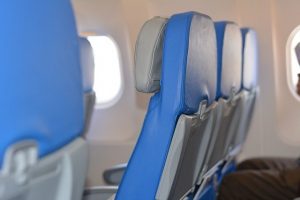 Have you heard of narrow-body airplanes? If so, you might be wondering how they differ from other types of airplanes. Narrow-body airplanes are common. Like all airplanes, they typically feature jet or propeller-driven engines. What is a narrow-body airplane exactly?
Have you heard of narrow-body airplanes? If so, you might be wondering how they differ from other types of airplanes. Narrow-body airplanes are common. Like all airplanes, they typically feature jet or propeller-driven engines. What is a narrow-body airplane exactly?
Overview of Narrow-Body Airplane
Also known as a narrow-body aircraft, a narrow-body airplane is a type of airplane that’s characterized by the use of a single aisle of seats. All airplanes have seats. Passenger seats are typically arranged in aisles. The term “narrow-body airplane” refers to any airplane that has a single aisle of seats. The signal aisle used in narrow-body airplanes typically has two to six seats per row.
With only a single aisle of seats, narrow-body airplanes are relatively small. They are smaller than most other types of airplanes, including wide-body airplanes (see below). Some narrow-body airplanes, in fact, only support a half-dozen passengers. Their small size means that narrow-body airplanes are restricted to short-distance flights. You won’t find many narrow-body airplanes performing long-distance flights. Since they are small, they lack the engine power and fuel capacity needed to traverse long distances.
Some of the most common types of narrow-body airplanes include the following:
- Boeing 707
- Boeing 727
- Boeing 737
- Boeing 757
- Airbus A320
Narrow-Body vs Wide-Body Airplanes
There are also wide-body airplanes. Wide-body airplanes live up to their namesake by featuring a wider fuselage body than their narrow-body counterparts. By definition, though, wide-body airplanes are those that have two or more aisles of seats. Some wide-body airplanes have 250 seats, whereas others have 600 or more seats. Regardless, the seats within wide-body airplanes are configured in multiple aisles.
Wide-body airplanes are generally used for long-distance flights. To accommodate multiple aisles, airplanes must be designed with a wide fuselage. And with a wide fuselage, they support larger and more powerful engines than their narrow-body counterparts. As a result, wide-body airplanes are commonly used for long-distance flights, including transatlantic flights.
Although there are exceptions, wide-body airplanes are usually more spacious than narrow-body airplanes. They offer more leg space for passengers, allowing for a more comfortable flight experience. Regardless, all wide-body airplanes have two or more aisles of seats.
In Conclusion
Most airplanes can be classified as either narrow-body or wide-body, depending on their seat configuration. Narrow-body airplanes only have a single aisle of seats, whereas wide-body airplanes have two or more aisles of seats.



